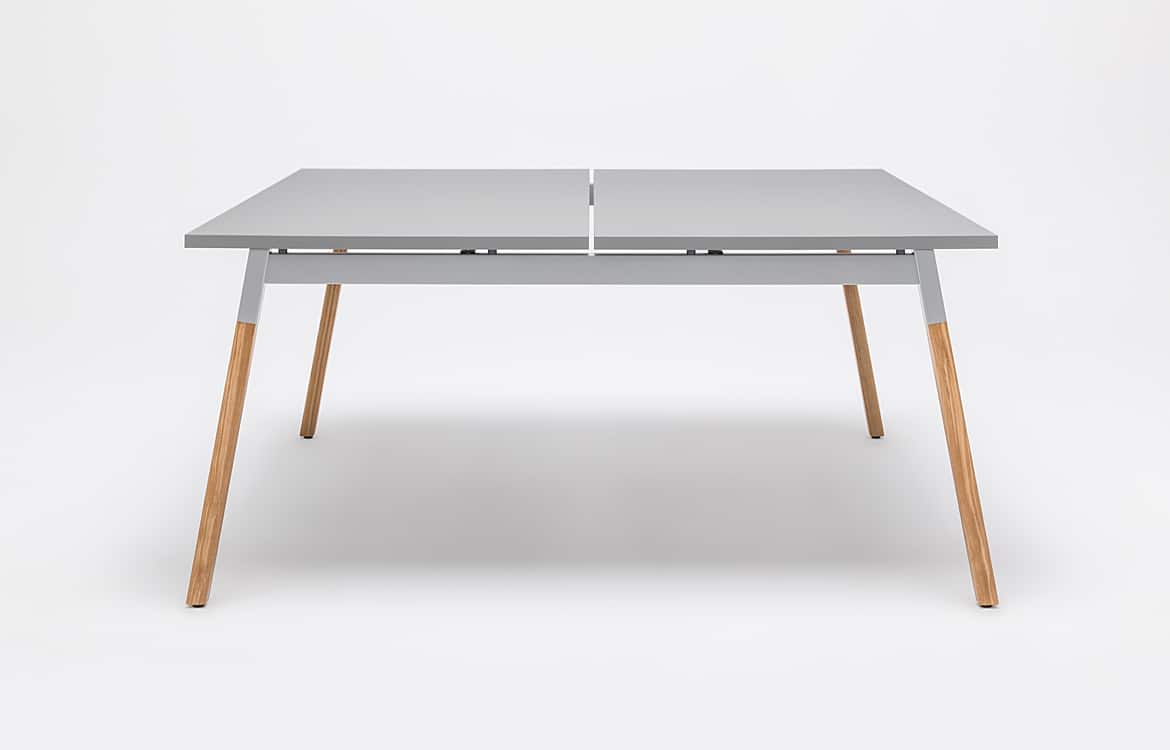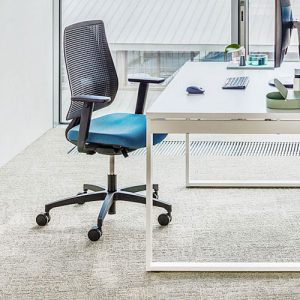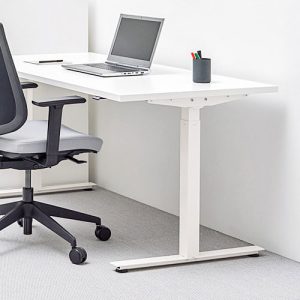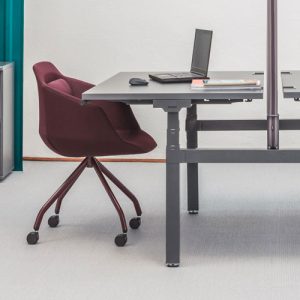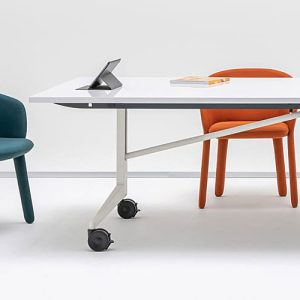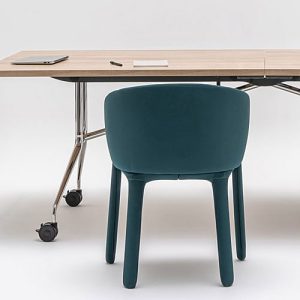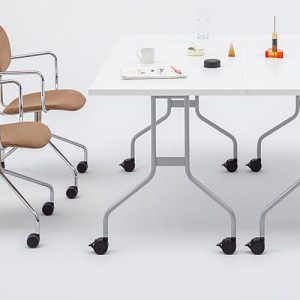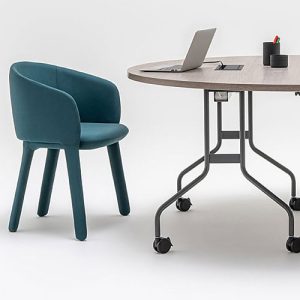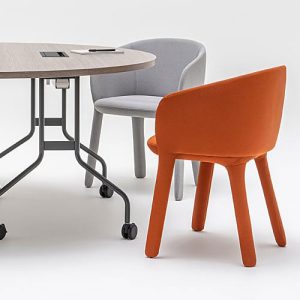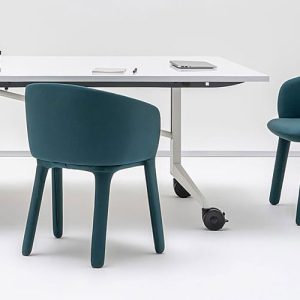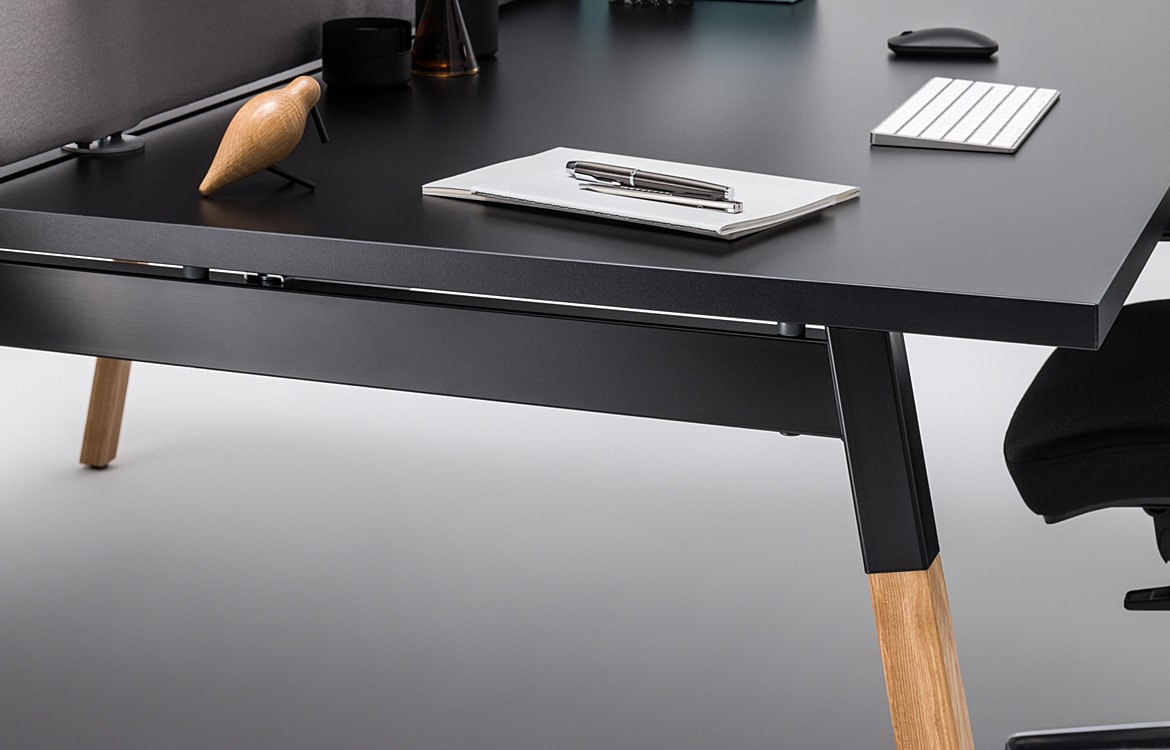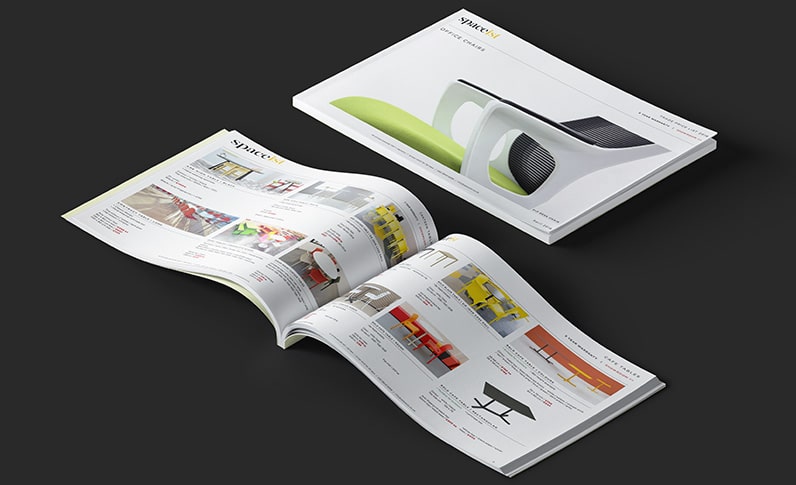The Mid-20th Century: Focus on Flexibility
Adjustable wooden desk and chair units had been in use since the 1930s, allowing chair and desk height to be adjusted to the individual student. By the mid 20th century the worlds of work and school had changed and designs reflected the new age. Throughout the 20th century, inspired by architecture-led design by the likes of Prouvé and Jacobsen, school desks and chairs became lighter and more flexible.
The Moveable Desk and Chair Combo
By 1970 the wrap-around desk chair combination allowed individual, space-saving seating with an individual chair for each student that featured a small desktop designed around the user’s body and sometimes storage under the chair. Still in frequent use today in high schools and colleges, these desks can be freely rearranged yet tend to be placed in rows.
The Impact of Progressive Education Theories
While progressive theories existed as early as the late 19th century, they were more likely to be found in specialised schools designed around the themes of learning through play and experimentation. As education theories evolved and classroom learning began to deviate from rote learning with rows of students repeating the lesson from a teacher, classroom design naturally followed.


